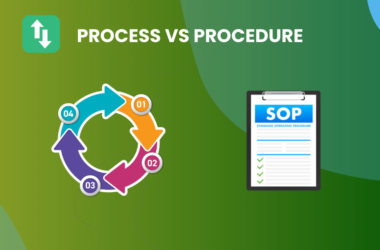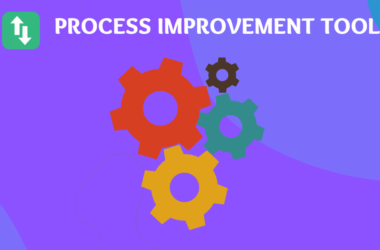Table of Contents Show
Agility has become more crucial than ever. Whether in business or personal life, the ability to quickly adapt and respond to changes can significantly impact success and growth. This article explores the concept of agility, its importance, and practical steps to become more agile.
Understanding Agility
Agility refers to the ability to move quickly and easily, but in a broader sense, it involves being able to adapt to change, respond to challenges, and continuously improve. Historically, agile practices have evolved from software development methodologies to a universal approach applicable across various industries and personal development.
Difference Between Being Agile and Doing Agile
Being agile involves adopting a mindset focused on flexibility, responsiveness, and continuous improvement. Doing agile, on the other hand, refers to the implementation of specific agile methodologies like Scrum or Kanban. While methodologies provide a framework, the agile mindset is what truly drives success.
Why Agility Matters?
Benefits in Business
- Faster Response to Market Changes: Agile businesses can pivot quickly in response to market trends and customer feedback.
- Improved Customer Satisfaction: By continuously iterating and improving, businesses can better meet customer needs.
- Enhanced Team Collaboration and Productivity: Agile practices foster a collaborative environment where teams work together more effectively.
Benefits in Personal Life
- Better Adaptability to Change: An agile mindset helps individuals embrace and navigate changes smoothly.
- Improved Problem-Solving Skills: Agility promotes innovative thinking and quick problem resolution.
- Enhanced Personal Growth and Learning: Continuous improvement and learning are core aspects of agility, leading to personal development.
Key Components of Agility
- Flexibility Flexibility is the ability to adapt to new conditions and pivot when necessary. In business, this might mean changing a product strategy based on customer feedback. Personally, it could involve adapting to new job roles or life circumstances.
- Responsiveness Being responsive means reacting quickly and effectively to changes and challenges. For businesses, this involves swiftly addressing customer concerns. On a personal level, it means being proactive and responsive to life’s demands.
- Speed Speed is essential for agility as it enables quick decision-making and execution. However, speed must be balanced with maintaining quality to ensure long-term success.
Steps to Become More Agile
1. Cultivate an Agile Mindset
Embrace Change and Uncertainty:
An agile mindset begins with embracing change and uncertainty. In today’s fast-paced world, changes are inevitable, and viewing them as opportunities rather than threats is crucial. Start by fostering a culture that welcomes new ideas and perspectives. Encourage team members to experiment and learn from failures. This shift in mindset can significantly reduce the fear of the unknown and promote a proactive approach to challenges.
Continuous Learning and Improvement:
A commitment to continuous learning and improvement is at the heart of agility. This involves not only acquiring new skills and knowledge but also regularly reflecting on experiences to identify areas for growth. Encourage your team to attend workshops, enroll in courses, and participate in industry events. Additionally, implement regular feedback sessions where employees can discuss what worked, what didn’t, and how processes can be improved.
2. Foster Agile Leadership
Lead by Example:
Agile leadership starts at the top. Leaders must embody the principles of agility in their actions and decisions. Demonstrate a willingness to adapt, take risks, and learn from mistakes. This sets a powerful example for the rest of the organization. For instance, a leader who openly shares their learning experiences and admits to their mistakes fosters an environment of trust and continuous improvement.
Empower Teams and Individuals:
Empowering teams and individuals is essential for fostering agility. This means giving employees the autonomy to make decisions and encouraging them to take ownership of their work. Implementing a decentralized decision-making process can speed up responses to changes and improve overall efficiency. For example, allowing teams to set their own goals and choose the best methods to achieve them can lead to innovative solutions and increased motivation.
3. Implement Agile Processes
Adopt Agile Methodologies
Implementing agile methodologies such as Scrum, Kanban, or Lean can provide a structured approach to managing work. Scrum involves working in short, iterative cycles called sprints, allowing teams to focus on delivering small, incremental improvements. Kanban, on the other hand, visualizes the workflow, helping teams identify bottlenecks and optimize processes. Choose a methodology that fits your organization’s needs and train your team on its principles and practices.
Regular Feedback Loops
Agility thrives on regular feedback loops. Practices like daily stand-up meetings, sprint reviews, and retrospectives provide continuous opportunities for feedback and adjustment. During stand-up meetings, team members can share their progress, discuss any roadblocks, and plan their tasks for the day. Sprint reviews allow the team to showcase their work and gather feedback from stakeholders, while retrospectives focus on reflecting on the sprint and identifying areas for improvement.
4. Enhance Communication and Collaboration
Open and Transparent Communication:
Effective communication is the backbone of agility. Establish open and transparent communication channels where team members feel comfortable sharing their thoughts and feedback. Use tools like Slack, Microsoft Teams, or Asana to facilitate real-time communication and collaboration. Encourage an open-door policy where employees can freely discuss their ideas and concerns with leadership.
Encourage Cross-Functional Collaboration:
Promote cross-functional collaboration by creating opportunities for different departments to work together. This can lead to innovative solutions and a better understanding of the organization’s overall goals. For instance, organizing regular inter-departmental meetings or forming cross-functional project teams can foster a culture of collaboration and knowledge sharing.
Agility in Practice: Real-Life Examples
A Company’s Journey to Becoming Agile:
A mid-sized tech company faced declining market share due to slow response times. By adopting Scrum and promoting a culture of continuous improvement, they turned around their performance. They increased customer satisfaction and saw a 30% improvement in project delivery times.
An Individual’s Path to Personal Agility:
A professional struggled with managing multiple responsibilities. By embracing an agile mindset and using techniques like time-boxing and regular self-reflection, they improved their productivity and work-life balance.
Common Challenges and How to Overcome Them
- Resistance to Change Change can be daunting. To manage resistance, communicate the benefits of agility clearly and involve everyone in the process.
- Maintaining Agility in Large Organizations Scalable agile practices like SAFe (Scaled Agile Framework) can help maintain agility in larger settings.
- Balancing Speed and Quality Ensure that quick actions do not compromise quality. Regularly review processes to maintain high standards.
Tools and Techniques to Support Agility
- Agile Project Management Tools Tools like Jira and Trello help manage agile projects by tracking progress, tasks, and team collaboration.
- Techniques for Continuous Improvement Practices like retrospectives and daily stand-ups facilitate ongoing reflection and improvement.
Measuring Agility
Key Metrics to Assess Agility
- Lead Time: The time from task initiation to completion.
- Cycle Time: The time taken to complete a single task or process.
- Customer Satisfaction: Feedback and satisfaction ratings can indicate the effectiveness of agile practices.
Conclusion
Becoming more agile is a continuous journey that offers substantial benefits in both business and personal life.
By adopting an agile mindset, fostering leadership, implementing agile processes, and leveraging the right tools, you can navigate the complexities of today’s fast-paced world more effectively. Start your journey to agility today and unlock the potential for growth and success.











1 comment